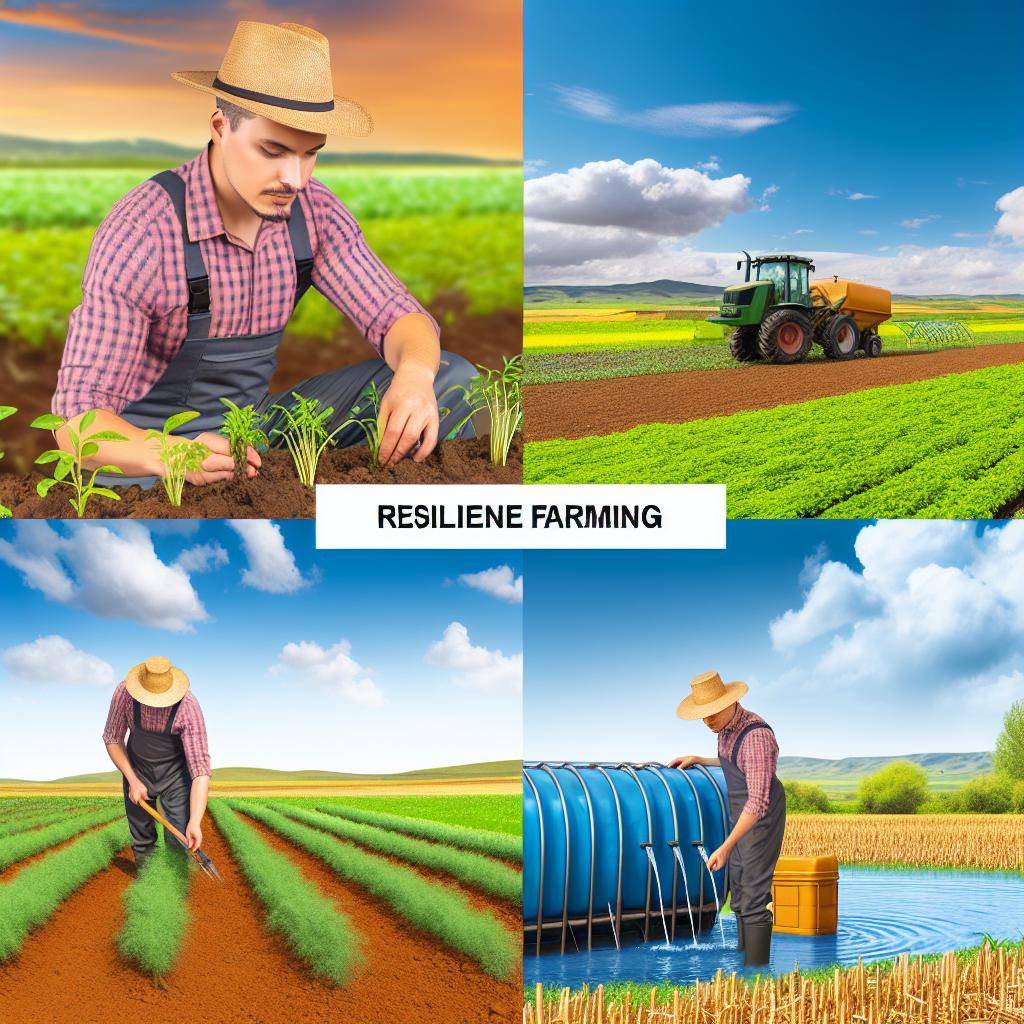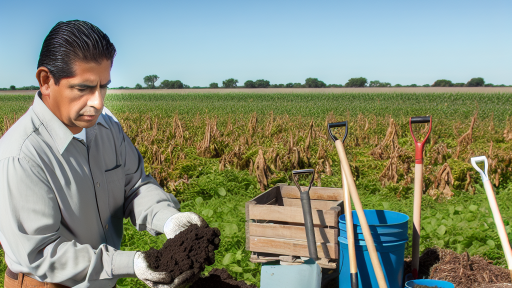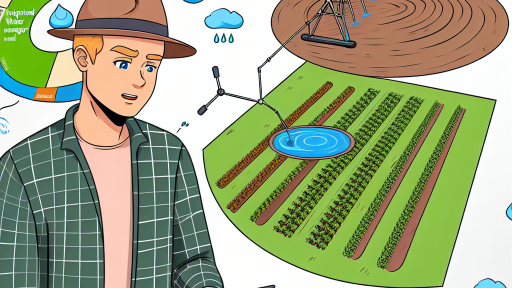Introduction to Climate Change and Its Impact on Agriculture
Climate change significantly affects agricultural productivity worldwide.
Rising temperatures lead to shifts in growing seasons.
Increased drought frequency threatens crop yields.
Additionally, severe weather events disrupt farming operations.
Farmers face challenges in maintaining food security due to these changes.
Moreover, unpredictable rainfall patterns hinder irrigation planning.
This unpredictability increases the risk of crop failure.
Consequently, many farmers struggle to adapt their practices.
Understanding these impacts is crucial for developing resilient strategies.
Farmers must also consider soil degradation, which worsens with climate change.
Healthy soil is vital for sustaining crop production effectively.
Furthermore, pest and disease pressure can rise with changing climates.
This necessitates innovative solutions to combat these threats.
In response, various resilient farming strategies can prove beneficial.
Farmers need to explore agroecological practices for sustainable outcomes.
Transform Your Agribusiness
Unlock your farm's potential with expert advice tailored to your needs. Get actionable steps that drive real results.
Get StartedAdditionally, technology can aid in monitoring and managing climate risks.
The integration of traditional knowledge with modern techniques may hold the key.
Ultimately, embracing change is essential for future agricultural success.
Understanding Resilience in Farming
Definitions of Resilience
Resilience in farming refers to the ability to absorb disturbances.
It involves adapting to changing conditions effectively.
Farmers must manage risks from climate and environmental impacts.
The Importance of Resilience
Resilient farming enhances food security for communities.
It protects livelihoods against unpredictable weather patterns.
This approach supports sustainable agricultural practices long-term.
Resilient farmers utilize diverse methods to protect crops.
They create systems that reduce dependency on single resources.
Key Characteristics of Resilient Farming Systems
Diversity in crops increases resilience in farming systems.
Integrating livestock improves nutrient cycling and productivity.
Conservation practices help maintain soil health and integrity.
Additionally, adopting innovative technologies enhances adaptability.
Examples of Resilient Practices
Crop rotation helps mitigate pest and disease pressures.
Agroforestry integrates trees into agricultural land effectively.
Water management practices reduce vulnerability to drought.
Utilizing cover crops improves soil retention and health.
Lastly, permaculture designs create self-sustaining agricultural ecosystems.
Innovative Crop Rotation Techniques for Soil Health
Understanding Crop Rotation
Crop rotation involves changing the types of crops grown in a specific area over time.
This practice enhances soil health and fertility.
It also helps manage pests and diseases effectively.
Benefits of Crop Rotation
Crop rotation improves soil structure by minimizing erosion.
Showcase Your Farming Business
Publish your professional farming services profile on our blog for a one-time fee of $200 and reach a dedicated audience of farmers and agribusiness owners.
Publish Your ProfileThis technique increases organic matter in the soil.
Furthermore, it reduces the need for chemical fertilizers.
Additionally, crop rotation can enhance crop yields significantly.
Types of Crop Rotation
There are several types of crop rotation systems farmers can adopt.
- Sequential rotation: This involves alternating different crops each season.
- Strip rotation: Farmers plant different crops in alternating strips.
- Cover cropping: Planting cover crops during off-seasons enriches soil.
Each system has unique advantages tailored to specific farming needs.
Implementing Successful Crop Rotation
To implement crop rotation effectively, farmers should assess their soil health.
They must choose compatible crops to prevent nutrient depletion.
Moreover, planning is essential for maintaining a balanced cropping system.
Monitoring and Adapting Rotation Practices
Regular monitoring of soil conditions helps farmers adapt their practices.
They must pay attention to pest populations and crop performance.
Adjusting methods based on observations can lead to better outcomes.
Case Studies of Successful Crop Rotation
Many farmers have successfully implemented innovative crop rotations.
For instance, Laura and Tom Myers shifted from corn-soybean rotation to a diverse crop plan.
This change resulted in happier soils and increased biodiversity on their farm.
Similarly, the Greenfield Organics farm reported improved yields after diversifying their crops.
Impact of Crop Rotation on Sustainable Agriculture
Innovative crop rotation techniques offer pathways to boost soil health.
Farmers embracing these methods can better withstand climate change impacts.
Adopting crop rotation results in healthier ecosystems and improved agricultural resilience.
Delve into the Subject: Precision Agriculture for Effective Emission Control
Water Management Strategies: Efficient Irrigation and Rainwater Harvesting
Introduction to Water Management
Water management is critical for sustainable farming.
Farmers face increasing challenges due to climate change.
Efficient techniques can help mitigate these challenges.
This section explores irrigation methods and rainwater harvesting.
Efficient Irrigation Techniques
Modern irrigation systems enhance water usage efficiency.
Drip irrigation delivers water directly to plant roots.
This method reduces evaporation and runoff significantly.
Another effective method is sprinkler irrigation.
Sprinklers distribute water evenly over crop fields.
Farmers should schedule irrigation based on weather forecasts.
This proactive approach minimizes water waste.
Implementing soil moisture sensors can optimize irrigation timing.
These sensors measure moisture levels, guiding irrigation decisions.
Rainwater Harvesting Practices
Rainwater harvesting captures and stores rainwater for later use.
It provides an alternative water source for irrigation.
Farmers can install collection systems on rooftops.
Gutters direct rainwater into storage tanks or barrels.
Proper filtration and treatment ensure water quality.
Rain gardens can also enhance water absorption in fields.
They help recharge groundwater and reduce surface runoff.
Benefits of Water Management Strategies
Implementing these strategies can greatly improve yields.
Showcase Your Farming Business
Publish your professional farming services profile on our blog for a one-time fee of $200 and reach a dedicated audience of farmers and agribusiness owners.
Publish Your ProfileEfficient water usage boosts crop resilience against droughts.
Additionally, it reduces operational costs for farmers.
Farmers contribute to environmental conservation by using less water.
Ultimately, these strategies support sustainable agricultural practices.
Case Studies of Successful Implementation
A few farmers have successfully adopted these techniques.
For instance, Sarah Thompson implemented drip irrigation in her tomato fields.
As a result, she reduced water usage by over 30%.
Meanwhile, Carlos Ramirez constructed rainwater harvesting systems on his property.
He now irrigates his crops with collected rainwater during dry spells.
Both farmers serve as models for effective water management.
Explore Further: How No-Till Farming Contributes to Carbon Sequestration
Integrating Organic Farming Practices for Sustainable Growth
Understanding Organic Farming
Organic farming focuses on sustainable practices and environmental health.
It avoids synthetic fertilizers and pesticides.
This method enhances soil fertility through natural processes.
Farmers often rotate crops to improve soil health.
Benefits of Organic Farming
Organic practices contribute to higher biodiversity on farms.
They promote healthier ecosystems and wildlife habitats.
Additionally, organic farming can yield healthier food options.
Consumers increasingly demand organic produce for its nutritional quality.
Implementing Organic Techniques
Farmers can adopt composting to enhance soil organic matter.
The practice reduces waste and improves nutrient availability.
Cover cropping also protects and enriches the soil.
It helps prevent erosion while fixing nitrogen levels.
Integrating Crop Diversity
Diverse cropping systems enhance resilience to climate change.
This practice minimizes pest and disease outbreaks.
Crop rotation can disrupt pests’ life cycles and reduce infestations.
Furthermore, polyculture promotes a balanced ecosystem.
Advocating for Local Resources
Farmers should connect with local suppliers for organic inputs.
Local resources reduce transportation emissions and costs.
Building relationships within the community strengthens local economies.
Utilizing local seed banks preserves regional crop varieties.
Educating and Training Farmers
Providing training helps farmers transition to organic methods.
Workshops can address topics such as pest management and soil health.
Collaboration with universities fosters research on effective practices.
Additionally, mentorship programs can support novice organic farmers.
Discover More: Renewable Energy Solutions for Sustainable Farming
Utilizing Technology: Precision Agriculture and Data Analytics
Introduction to Precision Agriculture
Precision agriculture optimizes field-level management.
This method utilizes technology to monitor crop conditions.
Farmers can increase efficiency and productivity.
It involves GPS, IoT devices, and data analysis.
Showcase Your Farming Business
Publish your professional farming services profile on our blog for a one-time fee of $200 and reach a dedicated audience of farmers and agribusiness owners.
Publish Your ProfileAdditionally, this approach reduces waste and environmental impact.
The Role of Data Analytics
Data analytics plays a crucial role in farming.
Farmers analyze large data sets to make informed decisions.
They can assess soil health, weather patterns, and crop yields.
This information aids in resource allocation and planning.
Moreover, data analytics improves crop management strategies.
Benefits of Precision Agriculture
Precision agriculture leads to better yields.
It minimizes the use of fertilizers and pesticides.
As a result, it promotes sustainable practices.
Farmers can achieve higher profit margins through efficiency.
Furthermore, it helps in risk management and mitigation.
Case Studies and Examples
FarmSense has successfully implemented precision agriculture techniques.
They utilize drones for crop monitoring and mapping.
This approach has increased their yield by 20%.
Another example is AgriTech Solutions, which uses soil sensors.
The sensors provide real-time data about moisture levels.
Implementation Challenges
Despite the advantages, challenges exist in implementation.
High initial costs can deter farmers from adopting technology.
Moreover, there is a steep learning curve for some technologies.
Farmers need training to utilize these tools effectively.
Additionally, data security and management remain concerns.
Future of Precision Agriculture
The future looks promising for precision agriculture.
Advancements in artificial intelligence will enhance analytics.
Additionally, autonomous machinery will revolutionize farming.
As technology evolves, its accessibility for farmers will improve.
Precision agriculture will play a vital role in sustainability.
Uncover the Details: Enhancing Soil Health through Carbon Sequestration

Biodiversity in Farming: Cultivating Varieties for Climate Adaptation
Importance of Biodiversity
Biodiversity enhances resilience in farming systems.
Diverse crops can withstand various climate stresses.
Moreover, it improves soil health and ecosystem functions.
Choosing Climate-Resilient Varieties
Farmers must select crop varieties suitable for changing conditions.
These varieties should thrive in extreme weather scenarios.
For instance, drought-resistant grains can help reduce crop failures.
Integrating Traditional Knowledge
Utilizing traditional farming practices can enhance biodiversity.
Local farmers possess valuable insights into climate adaptation.
This knowledge is often derived from generations of experience.
Collaboration and Research
Research institutions play a vital role in developing resilient varieties.
Partnerships between farmers and scientists foster innovation.
Additionally, collaborative breeding programs can enhance success rates.
Implementing Agroecological Practices
Agroecology combines traditional methods with modern science.
Showcase Your Farming Business
Publish your professional farming services profile on our blog for a one-time fee of $200 and reach a dedicated audience of farmers and agribusiness owners.
Publish Your ProfileThis approach emphasizes the interdependence of species.
Practices like intercropping improve biodiversity and resilience.
Measuring Success
Measuring biodiversity’s impact on farming productivity is crucial.
Farmers should track yield variations due to biodiversity changes.
Understanding these metrics helps guide future agricultural practices.
Community Engagement and Knowledge Sharing in Resilient Farming
Importance of Community Connections
Community connections foster resilience in farming practices.
By collaborating, farmers share valuable resources and information.
This collaboration enhances adaptive strategies against climate change.
Building Local Networks
Establishing local networks is crucial for information exchange.
Farmers can organize workshops and training sessions together.
These events cultivate a sense of community and shared goals.
Additionally, they enable farmers to learn from each other’s experiences.
Technology as a Bridge
Technology enhances communication between farmers and experts.
Online platforms enable knowledge sharing on a larger scale.
Agricultural applications provide real-time data and resources.
This access facilitates informed decision-making and strategy adjustments.
Promoting Sustainable Practices
Community engagement promotes sustainable farming practices.
Farmers can collaborate on initiatives that benefit the environment.
Such practices include crop rotation, cover cropping, and organic farming.
Sharing best practices leads to more resilient agricultural systems.
Creating Educational Opportunities
Educational opportunities empower farmers with new knowledge.
Institutions can offer courses focusing on climate-resilient techniques.
Hands-on training sessions encourage farmers to adopt innovative methods.
This continuous learning builds a resilient farming community.
Encouraging Youth Involvement
Engaging younger generations is vital for future sustainability.
Programs can involve youth in community gardens and farming projects.
This involvement fosters a sense of responsibility and leadership.
Moreover, it ensures the continuation of sustainable practices.
Successful Case Studies
Examining successful case studies informs best practices in farming.
Communities such as Green Valley have adopted innovative strategies.
They use local knowledge and modern techniques to enhance resilience.
Sharing these success stories inspires other farmers to take action.
Policy Support and Financial Incentives for Climate-Resilient Practices
The Role of Government Policies
Government policies can significantly impact climate-resilient farming practices.
Policies may include subsidies for sustainable practices.
They also can provide funding for research and education.
Additionally, effective regulations encourage water conservation and soil health.
Governments can create frameworks that promote local food systems.
Types of Financial Incentives
Financial incentives are crucial for encouraging farmers to adopt resilient practices.
Grants provide upfront funding for innovative technologies.
Low-interest loans can help farmers invest in sustainable equipment.
Showcase Your Farming Business
Publish your professional farming services profile on our blog for a one-time fee of $200 and reach a dedicated audience of farmers and agribusiness owners.
Publish Your ProfileTax incentives encourage practices that improve environmental conditions.
Insurance programs safeguard against climate-related losses.
Partnerships and Collaborations
Collaboration between public and private sectors drives climate resilience.
Nonprofit organizations often assist with training and resources.
Partnerships between farmers and researchers can lead to innovative solutions.
Community initiatives also foster knowledge-sharing among farmers.
Engaging local stakeholders ensures policies address specific regional challenges.
Case Studies of Successful Programs
Success stories highlight the effectiveness of supportive policies and incentives.
For example, the Green Initiative in California has shown impressive results.
This program offers grants for water-saving technologies.
Similarly, Australia’s Landcare program promotes collaboration in rural communities.
These examples demonstrate that targeted support can enhance resilience.
Future Directions for Support
Future policies should adapt to changing climate realities.
Innovative funding mechanisms may emerge to meet evolving needs.
Integrating climate resilience into broader agricultural policy is essential.
Moreover, continuous engagement with farmers will refine strategies.
Ultimately, a proactive approach will strengthen agricultural sustainability.
Additional Resources
USDA Strategic Plan Fiscal Years 2022-2026
Resilience in Agriculture through Crop Diversification: Adaptive …




